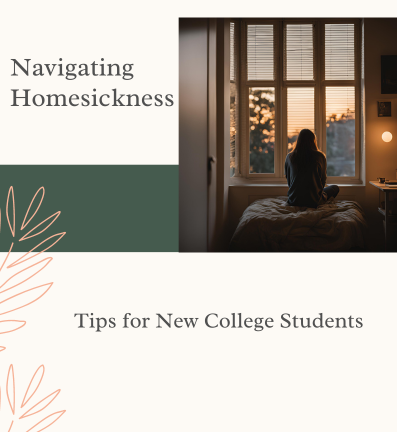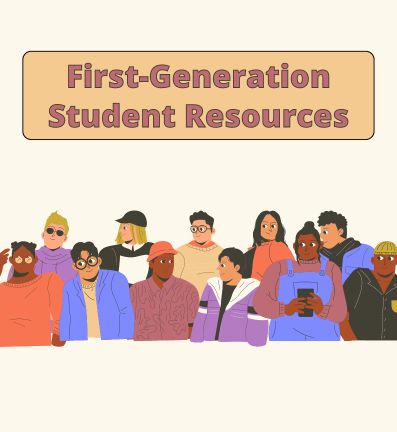Resources for Community College Students
Cooke Scholars are encouraged to think big. As you approach the transfer admissions process, we urge you to explore all possibilities. Below are resources to assist with transferring to a selective institution.
The Transfer Process
It’s never too early to begin researching your college options. The internet, college guidebooks, and your community college’s transfer adviser are great sources of information.
In addition to academic, personal, and professional interests, you will need to consider if a school is transfer-friendly before adding it to your list. A few points to consider as you are doing your research and planning to transfer include:
- Does the school provide information about the amount of aid reserved for transfer students? Some schools distribute scholarships to traditional first-year students before determining if there is any left over for transfer students.
- Are there specific programs geared towards transfer students?
- How does the school evaluate transfer credits?
- Does the school provide application fee waivers?
- A great resource is PTK Connect (free to PTK members), where you can research transfer-friendly colleges and scholarships available specifically for transfer students. Other resources include Transfer Scholars Network, Edvisors and the Coalition for College.
After you find schools that meet your basic requirements, divide these schools into three categories:
- Reach Schools: You fall at or below their academic profile in terms of grades and standardized testing (if required). Because of the benefits of attending selective institutions (i.e., those with acceptance rate of 30% or less), we strongly encourage our scholars to apply to 3-4 schools in this category.
- Target Schools: You fit their academic profile in terms of grades and standardized testing (if required) and the acceptance rate is around 30%-60%. We encourage our scholars to apply to 2-3 schools in this category.
- Likely Schools: You are at or above their academic profile in terms of grades and standardized testing (if required) and the acceptance rate is 60% or higher. We encourage our scholars to apply to 2-3 schools in this category.
You may find it useful to use our worksheet to make sure you are finding the right information about the schools and then track your final choices.
You have lots of choices to make during your transfer application process, and one of the most important decisions has to do with what kind of colleges to put on your list: state universities, small liberal arts colleges, technical universities, Ivy League, less rigorous, more rigorous… As a community college student looking to transfer into a four-year institution, you may also be receiving mixed message about your next step. Some may tell you that your community college curriculum could not have prepared you for a rigorous four-year selective college curriculum. Your friends may only apply to transfer to in-state institutions; your family may encourage you to stay close to home. As you sort through the advice of advisers, friends, and family, you have to figure out what is best for you.
Here are some reasons why you should consider applying to rigorous, highly selective schools:
Financial Benefits
Contrary to what you might have heard, applying to and attending an “expensive” college or university can cost less and get you more.
Compared to many colleges and universities, selective institutions:
Spend more money on you
Selective colleges invest more money per student than nonselective schools:
- Per-student expenditure at the most-selective schools: $92,000
- Per-student expenditure at the least-selective schools: $12,000
That $92,000 spent on each student translates into: excellent, dedicated faculty; state-of-the art laboratories and libraries; fully staffed centers to help with career planning, tutoring and studying abroad; and a greater diversity of majors, so you can choose what is right for you.
Lower the costs for you to attend
The colleges and universities with the highest endowments (such as Harvard, Yale, and Stanford) ask many students to pay only 10 percent of the overall cost of attendance. In other words, for a school that says its tuition and other costs are close to $80,000 per year, the student only pays $8,000 of that. For low-income students, that is usually reduced to $0 because financial aid covers all costs.
You can research average cost of attendance on the U.S. Department of Education’s College Scorecard.
Educational Benefits
Not all colleges provide the same educational opportunities; instead the quality of a student’s education can vary based on the resources the school has to offer.
Compared to many colleges and universities, selective institutions:
Are designed to help you graduate on time
Completion rates tell a lot about a school.
Community college transfers completing their bachelor’s degrees within 8.5 years of high school graduation:
- Non-selective institutions: Approximately 50%
- Selective institutions: Approximately 75%
- Most-selective institutions: Approximately 80-90%
These numbers mean that if you enter a selective institution, you are highly likely (due to your academic talent and the resources offered you) to graduate in a timely manner and be well positioned to enter the workforce or go on to graduate school. As a transfer student, the ability to graduate in a concise timeframe is even more important.
Give you the chance to make friends with those who share a passion for learning
Attending a selective school means you are likely to be surrounded by other intellectually curious students; what you learn from other intelligent people enriches your college experience.
Provide you with more
With more resources at their disposal, selective institutions are able to offer you unparalleled benefits.
- More enriching academic experiences
- Lower student to faculty ratios
- More chances to take small seminar classes
- Exposure to top-notch faculty
- More opportunities outside the classroom
- Study abroad
- Undergraduate research
- Internship opportunities
- More access to state-of-the-art facilities
- Labs
- Recreation centers
- Libraries
Income and career benefits
For high-achieving transfer students with financial need, the rewards of attending a selective college or university can stretch well beyond graduation, affecting such things as exposure to greater postgraduate opportunities and overall earnings.
Compared to many colleges and universities, selective institutions:
Expose you to graduate school opportunities
Students who attend selective colleges and universities receive greater exposure to resources that can help on the path to graduate school (these include faculty mentors and like-minded peers).
Provide you access to important and influential networks
Alumni groups can help open doors to new opportunities.
Increase your chances of making more money over your lifetime
Research has found that students from low-income backgrounds who attend elite schools stand to make greater financial gains over a lifetime than their peers who attend less selective schools.
The campus visit allows you to see and experience firsthand what the campus culture is all about and helps you to determine if that college would be a good fit for you.
As a transfer student, there are specific questions you should ask during your campus visit that go beyond what a traditional student should ask:
- What types of activities are available for transfer students to ease the transition to the four-year college? Is there a separate orientation for transfer students?
- Are there student organizations or specific programs for transfer students?
- Are there opportunities for transfer students to get involved in undergraduate research? Study abroad?
- Is there a specific transfer student adviser?
- Who evaluates transfer credit? Can you find out prior to enrolling how your credit will transfer?
- Are there certain levels of courses that will be off-limit to you as a transfer student, potentially coming in with junior standing? For instance, some colleges limit intro level language courses to first and sophomore year students. If these courses are part of your degree requirements and you are not transferring them in, you will need to know how you will be able to get the credit.
- What percent of the student population are transfer students from community colleges?
What is the housing situation like for transfer students? Is on-campus housing reserved for transfers? What kind of housing is available for undergraduate students with children and families? - Is there an office for commuting students? Does it have a study space or an area that students can use between classes?
- Are child care services available for students?
- Does the school offer application fee waivers?
So you have put together your list of colleges to apply for transfer—now what? It is time to put together a competitive application. The first step is to determine application requirements for each school on your list. As a transfer student, please be sure that you are looking at the requirements for transfer and not first year admission, as they may be different. For instance, schools often have a later application deadline for transfer students. Do not let application fees stop you from applying—look into fee waivers that many schools will provide for applicants with financial need.
Two important parts of college applications are the letters of recommendation and the essays.
When identifying recommenders, keep in mind:
- It’s best to request recommendations from professors or other educators with whom you have had recent contact.
- A professor you have interacted with both in and out of class, such as through a student organization or a research project, is a great choice.
- Know your recommender well enough so that he/she can go beyond a generic letter and give a good illustration of your character for the admissions reviewers.
- Talk to the recommender to be sure he/she has all the information needed to write the letter. Provide a resume to your recommender.
- Give each recommender enough time to complete and submit the recommendation. Aim for at least two weeks before the deadline, if not more.
Take advantage of the writing center at your community college to assist you with your essays. Also seek out the help of a professor or adviser for proofreading. Write a strong personal statement, take time to plan your essays, and do not forget to proofread.
The Transfer Process
It’s never too early to begin researching your college options. The internet, college guidebooks, and your community college’s transfer adviser are great sources of information.
In addition to academic, personal, and professional interests, you will need to consider if a school is transfer-friendly before adding it to your list. A few points to consider as you are doing your research and planning to transfer include:
- Does the school provide information about the amount of aid reserved for transfer students? Some schools distribute scholarships to traditional first-year students before determining if there is any left over for transfer students.
- Are there specific programs geared towards transfer students?
- How does the school evaluate transfer credits?
- Does the school provide application fee waivers?
- A great resource is PTK Connect (free to PTK members), where you can research transfer-friendly colleges and scholarships available specifically for transfer students. Other resources include Transfer Scholars Network, Edvisors and the Coalition for College.
After you find schools that meet your basic requirements, divide these schools into three categories:
- Reach Schools: You fall at or below their academic profile in terms of grades and standardized testing (if required). Because of the benefits of attending selective institutions (i.e., those with acceptance rate of 30% or less), we strongly encourage our scholars to apply to 3-4 schools in this category.
- Target Schools: You fit their academic profile in terms of grades and standardized testing (if required) and the acceptance rate is around 30%-60%. We encourage our scholars to apply to 2-3 schools in this category.
- Likely Schools: You are at or above their academic profile in terms of grades and standardized testing (if required) and the acceptance rate is 60% or higher. We encourage our scholars to apply to 2-3 schools in this category.
You may find it useful to use our worksheet to make sure you are finding the right information about the schools and then track your final choices.
You have lots of choices to make during your transfer application process, and one of the most important decisions has to do with what kind of colleges to put on your list: state universities, small liberal arts colleges, technical universities, Ivy League, less rigorous, more rigorous… As a community college student looking to transfer into a four-year institution, you may also be receiving mixed message about your next step. Some may tell you that your community college curriculum could not have prepared you for a rigorous four-year selective college curriculum. Your friends may only apply to transfer to in-state institutions; your family may encourage you to stay close to home. As you sort through the advice of advisers, friends, and family, you have to figure out what is best for you.
Here are some reasons why you should consider applying to rigorous, highly selective schools:
Financial Benefits
Contrary to what you might have heard, applying to and attending an “expensive” college or university can cost less and get you more.
Compared to many colleges and universities, selective institutions:
Spend more money on you
Selective colleges invest more money per student than nonselective schools:
- Per-student expenditure at the most-selective schools: $92,000
- Per-student expenditure at the least-selective schools: $12,000
That $92,000 spent on each student translates into: excellent, dedicated faculty; state-of-the art laboratories and libraries; fully staffed centers to help with career planning, tutoring and studying abroad; and a greater diversity of majors, so you can choose what is right for you.
Lower the costs for you to attend
The colleges and universities with the highest endowments (such as Harvard, Yale, and Stanford) ask many students to pay only 10 percent of the overall cost of attendance. In other words, for a school that says its tuition and other costs are close to $80,000 per year, the student only pays $8,000 of that. For low-income students, that is usually reduced to $0 because financial aid covers all costs.
You can research average cost of attendance on the U.S. Department of Education’s College Scorecard.
Educational Benefits
Not all colleges provide the same educational opportunities; instead the quality of a student’s education can vary based on the resources the school has to offer.
Compared to many colleges and universities, selective institutions:
Are designed to help you graduate on time
Completion rates tell a lot about a school.
Community college transfers completing their bachelor’s degrees within 8.5 years of high school graduation:
- Non-selective institutions: Approximately 50%
- Selective institutions: Approximately 75%
- Most-selective institutions: Approximately 80-90%
These numbers mean that if you enter a selective institution, you are highly likely (due to your academic talent and the resources offered you) to graduate in a timely manner and be well positioned to enter the workforce or go on to graduate school. As a transfer student, the ability to graduate in a concise timeframe is even more important.
Give you the chance to make friends with those who share a passion for learning
Attending a selective school means you are likely to be surrounded by other intellectually curious students; what you learn from other intelligent people enriches your college experience.
Provide you with more
With more resources at their disposal, selective institutions are able to offer you unparalleled benefits.
- More enriching academic experiences
- Lower student to faculty ratios
- More chances to take small seminar classes
- Exposure to top-notch faculty
- More opportunities outside the classroom
- Study abroad
- Undergraduate research
- Internship opportunities
- More access to state-of-the-art facilities
- Labs
- Recreation centers
- Libraries
Income and career benefits
For high-achieving transfer students with financial need, the rewards of attending a selective college or university can stretch well beyond graduation, affecting such things as exposure to greater postgraduate opportunities and overall earnings.
Compared to many colleges and universities, selective institutions:
Expose you to graduate school opportunities
Students who attend selective colleges and universities receive greater exposure to resources that can help on the path to graduate school (these include faculty mentors and like-minded peers).
Provide you access to important and influential networks
Alumni groups can help open doors to new opportunities.
Increase your chances of making more money over your lifetime
Research has found that students from low-income backgrounds who attend elite schools stand to make greater financial gains over a lifetime than their peers who attend less selective schools.
The campus visit allows you to see and experience firsthand what the campus culture is all about and helps you to determine if that college would be a good fit for you.
As a transfer student, there are specific questions you should ask during your campus visit that go beyond what a traditional student should ask:
- What types of activities are available for transfer students to ease the transition to the four-year college? Is there a separate orientation for transfer students?
- Are there student organizations or specific programs for transfer students?
- Are there opportunities for transfer students to get involved in undergraduate research? Study abroad?
- Is there a specific transfer student adviser?
- Who evaluates transfer credit? Can you find out prior to enrolling how your credit will transfer?
- Are there certain levels of courses that will be off-limit to you as a transfer student, potentially coming in with junior standing? For instance, some colleges limit intro level language courses to first and sophomore year students. If these courses are part of your degree requirements and you are not transferring them in, you will need to know how you will be able to get the credit.
- What percent of the student population are transfer students from community colleges?
What is the housing situation like for transfer students? Is on-campus housing reserved for transfers? What kind of housing is available for undergraduate students with children and families? - Is there an office for commuting students? Does it have a study space or an area that students can use between classes?
- Are child care services available for students?
- Does the school offer application fee waivers?
So you have put together your list of colleges to apply for transfer—now what? It is time to put together a competitive application. The first step is to determine application requirements for each school on your list. As a transfer student, please be sure that you are looking at the requirements for transfer and not first year admission, as they may be different. For instance, schools often have a later application deadline for transfer students. Do not let application fees stop you from applying—look into fee waivers that many schools will provide for applicants with financial need.
Two important parts of college applications are the letters of recommendation and the essays.
When identifying recommenders, keep in mind:
- It’s best to request recommendations from professors or other educators with whom you have had recent contact.
- A professor you have interacted with both in and out of class, such as through a student organization or a research project, is a great choice.
- Know your recommender well enough so that he/she can go beyond a generic letter and give a good illustration of your character for the admissions reviewers.
- Talk to the recommender to be sure he/she has all the information needed to write the letter. Provide a resume to your recommender.
- Give each recommender enough time to complete and submit the recommendation. Aim for at least two weeks before the deadline, if not more.
Take advantage of the writing center at your community college to assist you with your essays. Also seek out the help of a professor or adviser for proofreading. Write a strong personal statement, take time to plan your essays, and do not forget to proofread.

Common App represents more than 1,000 diverse institutions of higher education. It connect applicants and those who support them to a wide array of public and private colleges and universities across all 50 U.S. states and 20 countries.
Visit Common App for Transfer
Types of Financial Aid
Federal and State Aid
- Consists of funds provided by states, federal loans, and Pell Grants
- Requires an application (e.g. FAFSA, the Free Application for Federal Student Aid)
- Disbursed on a first-come, first-served basis, so apply early and meet deadlines
- Limited to U.S. citizens and permanent residents
Grants and Scholarships
- Funds students do not have to pay back
- Based on academic merit, financial need, or other criteria (i.e., leadership, service, athletic, musical talent)
- Given by schools, state and federal government, or private organizations and may or may not involve an application
- Can be a renewable or one-time award
Loans
- Funds borrowed to pay for school
- Accrue interest, so you have to pay back after graduation more than you borrowed
- Offered to parents/guardians and students
- Offered by government, private banks, or lending organizations with varying eligibility, terms, and interest rates (WARNING: private loan interest rates can be high!)
- Have maximum amounts set for each year
Work Study
- Provides part-time work opportunities (10-15 hours per week) offered through the school but funded by both the federal government and the school
- Provides income ($1,800+) per semester in additional funds for school-related expenses
- Part of an overall financial aid package granted by the college
Other Information to Consider
Over two-thirds of all college-going students receive financial aid each year. Strategies to maximize aid opportunities include: starting the process early, researching on the web, and selectively picking the scholarships that can bring the greatest return on your investment of time and energy. In other words, don’t pursue all scholarships equally but consider:
- Criteria of the scholarship and whether you can be competitive
- The time it takes to complete the application
- Amount of money of the scholarship, how many years you might get the funding, and how it might compare to the costs of attending the schools you are considering
Keep in mind that once you get your financial aid offers, you can contact the financial aid office to find out whether there are more funds available or whether the college or university can change the aid package to be more accommodating.



